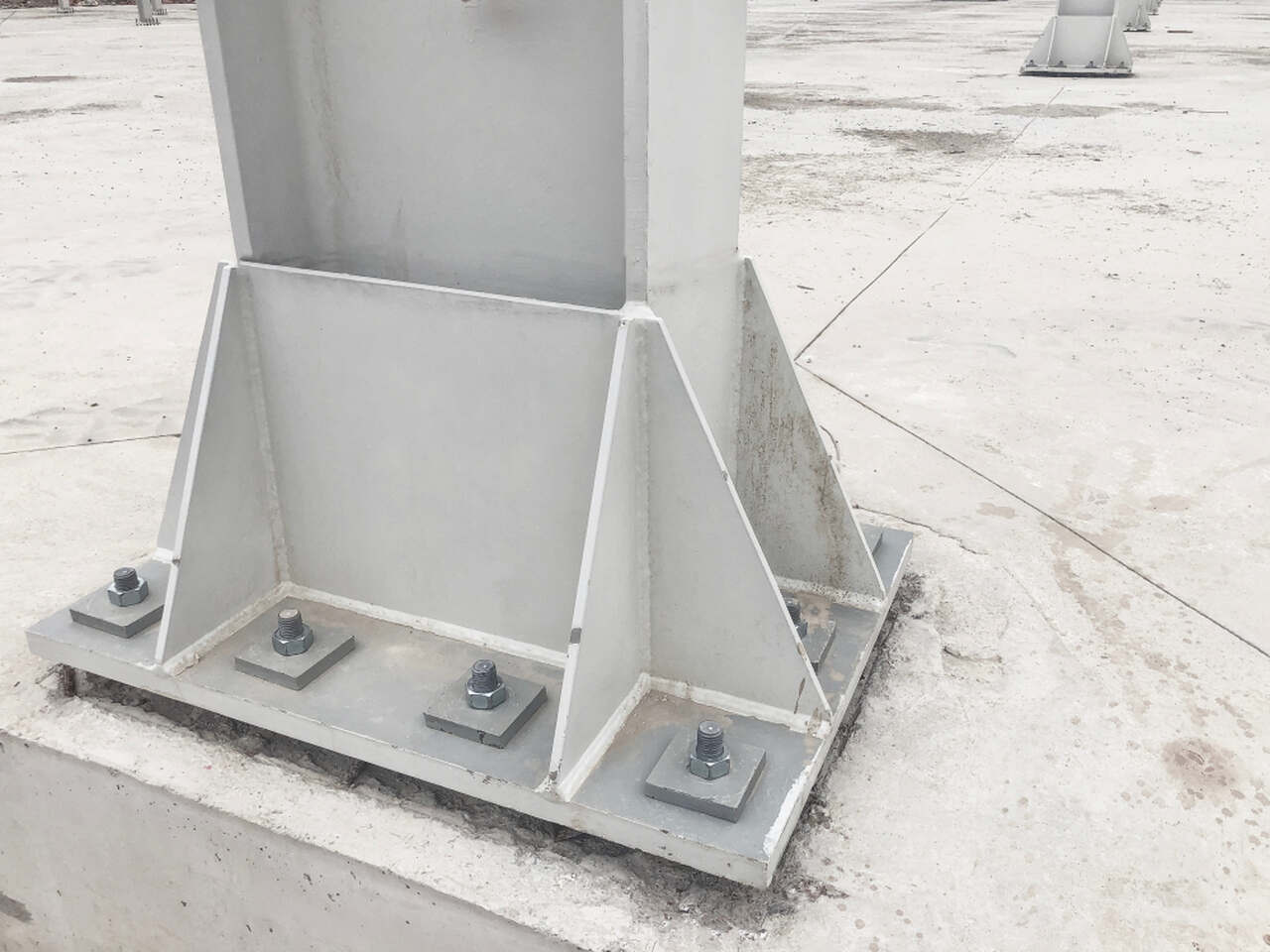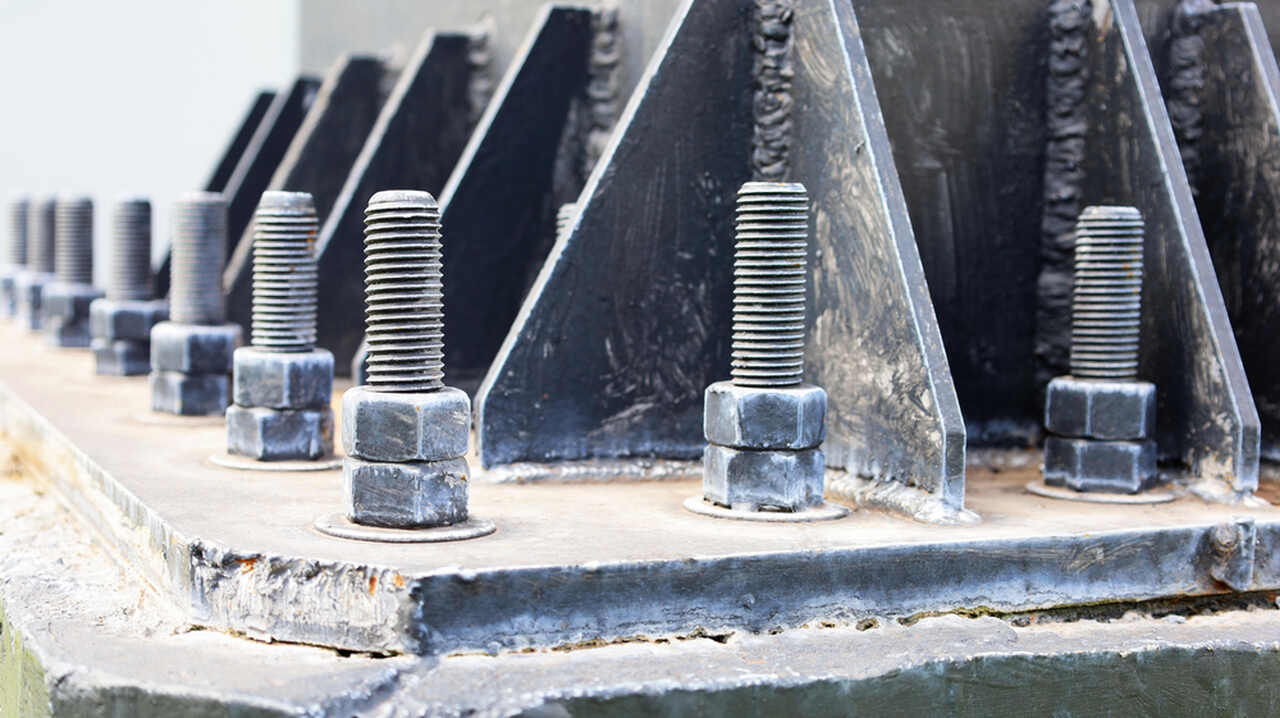
When it comes to building sturdy and long-lasting structures, anchoring plays a crucial role. This process is usually hidden within the concrete and provides the necessary reinforcement and support to ensure that buildings, bridges, and various other structures remain safe and stable.
In this article prepared by Baumerk, construction chemicals specialist, we will answer the question of what a chemical anchoring is, and then explore what it is used for and its types.
What is Anchoring?

Anchoring is the process of connecting various materials together or securing building elements such as concrete, masonry, etc. There are different types of anchors used in construction projects and they are often used to secure, move, or reinforce building or structural elements in place.
What is Anchor Adhesive Installation Mortar?

Anchor adhesive installation mortar is a type of mortar used in the construction and building industry. This mortar is used to securely fix anchors or dowel systems to concrete, stone, brick, or other building materials.
Anchor adhesive installation mortar provides a durable and reliable connection by filling around the perimeter of the anchors or dowels and joining them with the rest of the structure.
Such mortars are usually epoxy, acrylate, or polyester-based. When these mortars are applied to the relevant structural elements, the mortar hardens and ensures the anchorage is firmly in place.
Chemical anchoring is used especially for fixing structural elements, installation of iron reinforcement, construction of reinforced concrete structures and other construction applications.
These mortars are preferred for their durability and strength. They may also have properties that indicate resistance to chemical or environmental influences.
What is an Anchor Used For?

Chemical anchoring serves numerous purposes in construction and engineering. They are indispensable components in various applications that ensure the safety and longevity of structures. Let's examine some of the main uses of anchoring in building projects:
1. Foundation Support
Anchor rebar is frequently used in building foundations to anchor structural components. By installing anchors in the concrete foundation, builders can connect beams, columns, and other load-bearing elements, providing stability and ensuring that weight is evenly distributed.
2. Reinforcement and Repair
In the construction of buildings and bridges, anchoring is necessary to connect structural elements. The chemical anchoring process helps prevent movement and displacement, ensuring the structural integrity of the entire assembly. Anchoring is very important in earthquake-prone areas as it helps structures withstand lateral forces.
EPOX 307 and POLY 308 in the Baumerk product catalog meet the reinforcement and repair needs of building projects in the right way with their easy application, high chemical resistance, and high adhesion performance.
3. Equipment Installation
In industrial and commercial environments, chemical anchoring is often used to secure heavy equipment and machinery to concrete floors. This ensures that the equipment remains in place during operation, preventing potential accidents and damage.
4. Wall Fixing
Anchoring is used in a variety of wall-fixing applications. Whether it's fixing shelves, cabinets, or other fixtures to concrete walls, anchoring allows for a secure connection, ensuring that these items stay in place for a long time.
5. Retaining Walls
Anchors provide the necessary stability for retaining walls, which are essential to prevent soil erosion and maintain the integrity of the landscape. They anchor the wall to the concrete base below, allowing it to withstand the pressure of the retained soil.
6. Facade Systems
In architectural applications, anchors are used to support facade systems. They help to evenly distribute the load of exterior cladding, shear walls and other architectural features, ensuring the safety and aesthetics of the building.
7. Bridge Construction
Anchorage is critical in bridge construction to connect various structural components. They help distribute the weight and forces applied to the bridge, ensuring its stability and transportation safety.
8. Wind and Solar Energy
In the renewable energy sector, anchoring is used to secure wind turbines and solar panels to concrete foundations. This process is crucial to maintain the functionality and safety of energy systems.
The versatility and adaptability of chemical anchoring applications make them essential components in a wide range of construction and engineering applications. Their role in ensuring the structural integrity of buildings and infrastructure cannot be overstated.
What are the Types of Anchors?

Anchor types can vary according to different construction needs and building types. Here are detailed descriptions of commonly used anchor types:
1. Chemical Anchoring
- Chemical anchors work with materials that provide a connection through chemical reactions. They are generally used to reinforce reinforced concrete structures or to increase their bearing capacity.
- They can be two-component or one-component. Two-component chemical anchors initiate the reaction by mixing two separate chemical components. One-component anchors initiate the reaction automatically during application.
- Chemical anchors offer high strength and long life and provide a strong bond to reinforced concrete structural elements.
2. Mechanical Anchoring
- Mechanical anchors fulfill the function of fixing structural elements using physical fasteners. These elements are usually mechanical parts such as nails, bolts, dowels, and clamps.
- Mechanical anchors provide quick and easy assembly. These types of anchors are most often used in the assembly of reinforced concrete structures or in the fixing of iron frames.
- The type of anchor may vary depending on the intended use, load-bearing requirements, and type of structural elements.
3. Passive Anchoring
- Passive anchors are fasteners used in conditions of continuous tension or stress. These anchors are used to stabilize or reinforce structural elements.
- There are types of passive anchors commonly used in rock stabilization or rock climbing.
In summary, chemical anchoring is one of the most important components of the construction and engineering world. Although they are not always visible, their role in providing stability, safety, and longevity to structures is undeniable.
Understanding what an anchor is and how to apply it correctly is essential for anyone involved in construction or engineering projects.

As we have already mentioned, anchoring has a wide range of applications, from supporting foundations to anchoring equipment and infrastructure. By following the correct anchorage application process, you can ensure the strength and stability of your building projects and build your future on a solid foundation of knowledge and security
Now that we have answered the question of what is an anchor, let us remind you that you can take a look at the Anchoring and Adhesive Mortar - EPOX 305 product produced by Baumerk for your needs in your building projects!
Finally, you can contact Baumerk for any questions you may have after reading our article, and visit our blog, full of our informative content to get more information about the construction world!


